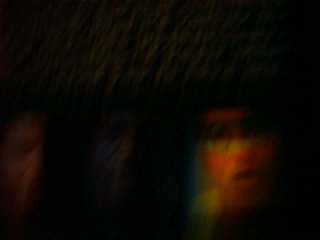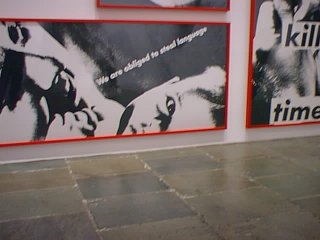Editor's notesElection Day 2000
Many full months have passed since the last transmission from Newark Review, so glad to be now finally issuing material that has arrived in the mean/time. Thanks to all contributors (and readers!).One component here, “A Knower’s Survey” circulated online by Amiri Baraka earlier this year, was originally intended for another magazine. For unknown reasons it was not published and remained unpublished until now. Here Baraka asks us to consider what we know of the arts of the past century. Since the questions are presented in the form of a survey, I am hopeful that some readers will take the time to complete sections of interest to them. ANY responses to this “Knower’s Survey” will be included in future editions of Newark Review.
Our next set, slated for January 2001, will be a specialty issue in which one particular form is explored. Material that embodies principles of “cybertext,” as described by Espen Aarseth in Cybertext: Perspectives On Ergodic Literature (Johns Hopkins 1997), will be presented.
In Cybertext, Aarseth distinguishes cybertext from other modes of textuality in several ways. Cybertext’s major defining point is that it “contains an information feedback loop,” essentially an input (leading to) output function for readers, a type of openly structured call and response, or ongoing decision and result. Focusing or centering attention on the viewer of a text, cybertext transaction calls for intervention and response by the reader, rather than (or in addition to) interpretation. Through creative and experimental application in whatever medium is involved (paper, radio, television, computer monitor, etc.), cybertext removes the viewer/user from a guided sequence of events (a linear flow of subject matter) and places them as the driving force, with narrative control in the experience. Aarseth defines ergodic literature as textual presentations where the reader/viewer makes selective movements to effectuate a semiotic sequence, where "nontrivial effort is required to allow the reader to traverse the text." As an illustration of meaning and consequence, Aarseth writes: “The cybertext reader is a player, a gambler; the cybertext is a game-world or world-game; it is possible to explore, get lost, and discover secret paths in these texts, not metaphorically, but through the topological structures of the textual machinery.”
Aiming to remove an author’s (one-sided) perspective from the textual creation, a cybertext mechanically opens up the ability for a digital body of work to contain or develop multiple perspectives of its own. It is also, possibly, a much more personal form of digital communication than hypertext, which is nearly always impersonal. The cybertext author or editor may create the environment, characters, and other aspects of narrative (or let you do it) but the feedback loop between the cybertext and the viewer is entirely spontaneous and instinct-driven.
This distinction in textuality, pedagogically and creatively speaking, deserves some thought, for what it can tell us about the principles and evolution of human communication. Hypertext, convenient as a way of directing people to what they want, or what you want them to see, is more popular than ever in the public sphere. From an educational standpoint, understanding cybertext may help us to remodel our academic process in the face of the demands for the use of technology.
* * * * *
The Department of Humanities and Social Sciences at New Jersey Institute of Technology sponsors Newark Review; each issue appears in print and online. Writers and artists from New Jersey and NJIT community: please contact us if you have work to contribute. Poetry, prose, and images are welcome for future issues, as are hypertexts, reviews and critical writing.
NEWARK REVIEW / NJIT / Humanities & Social Sciences / Newark, NJ 07102 or via newrev@njit.edu
-Chris Funkhouser, editor

